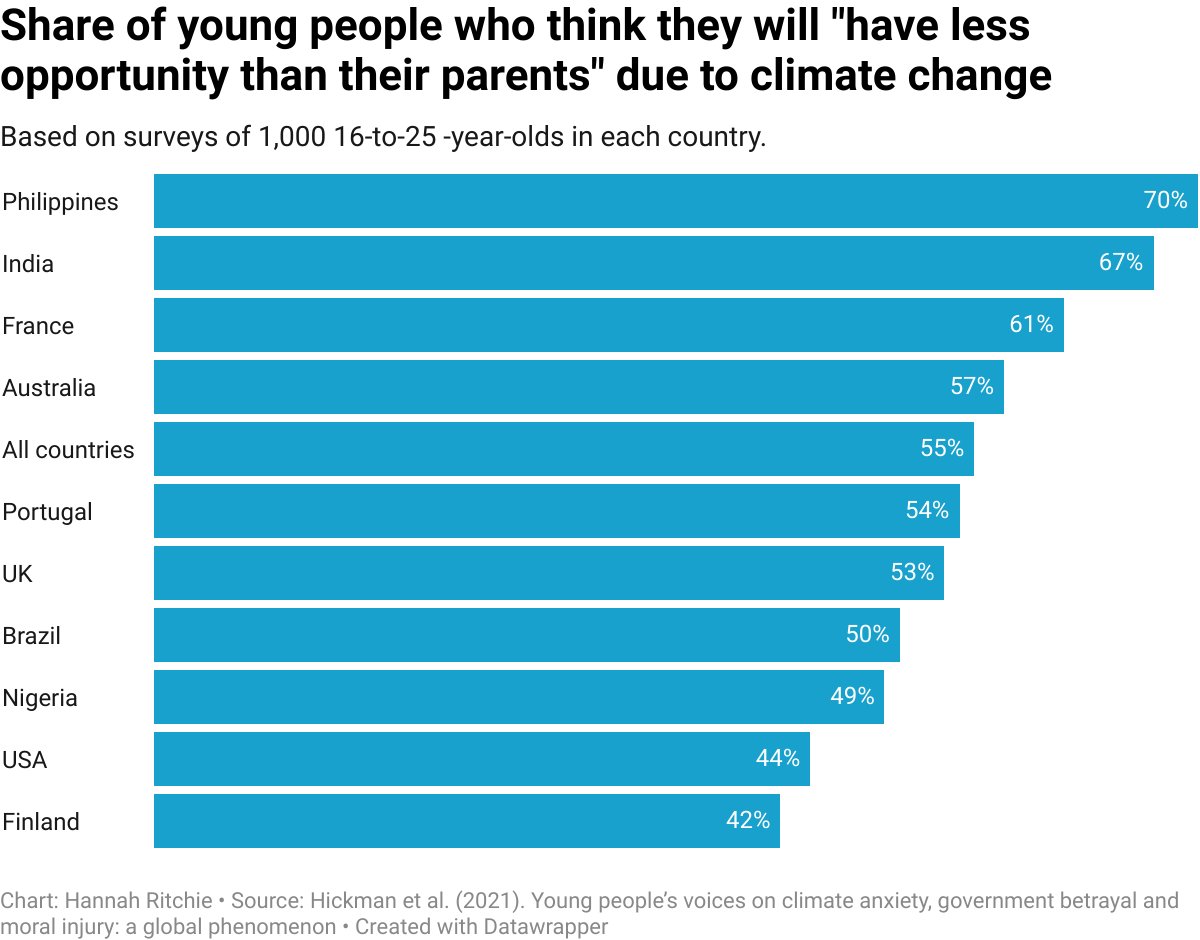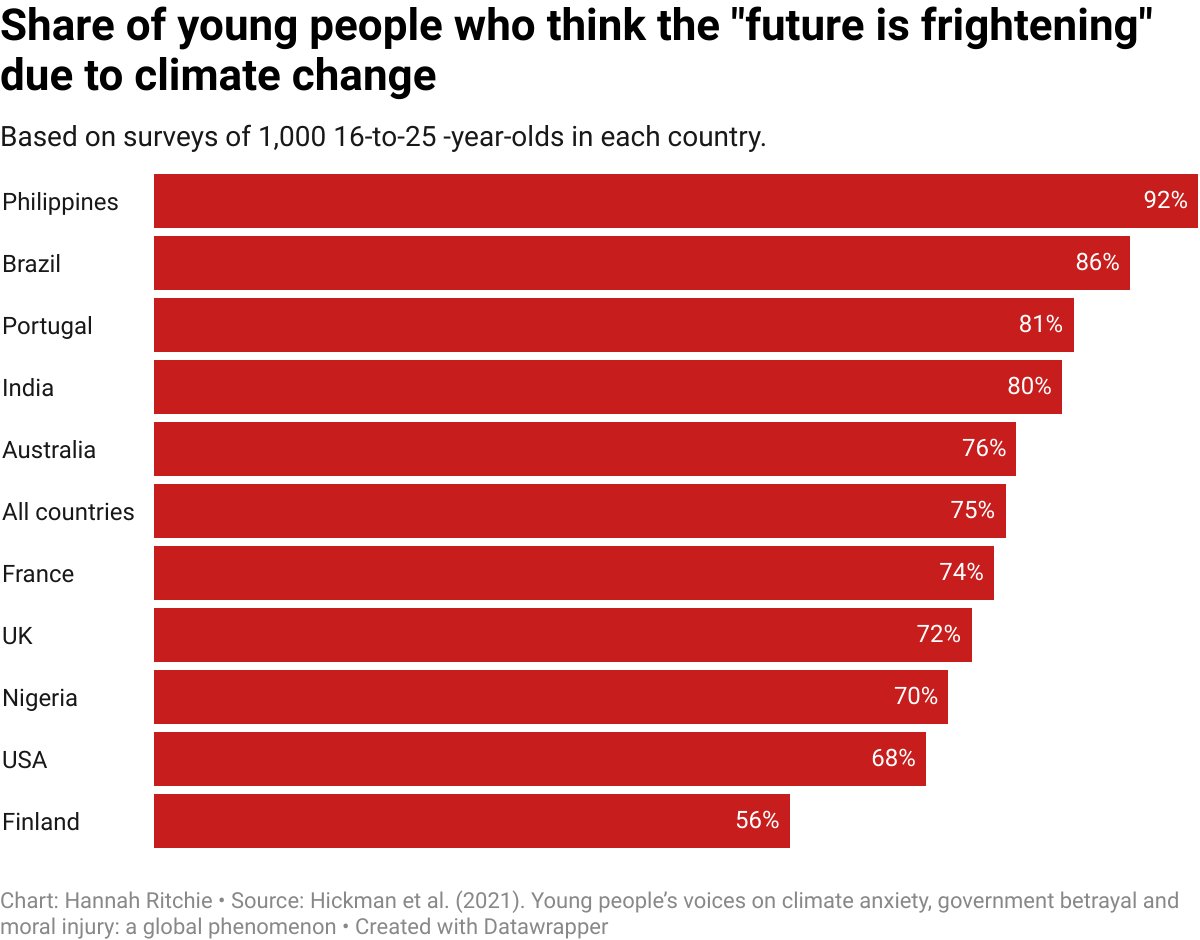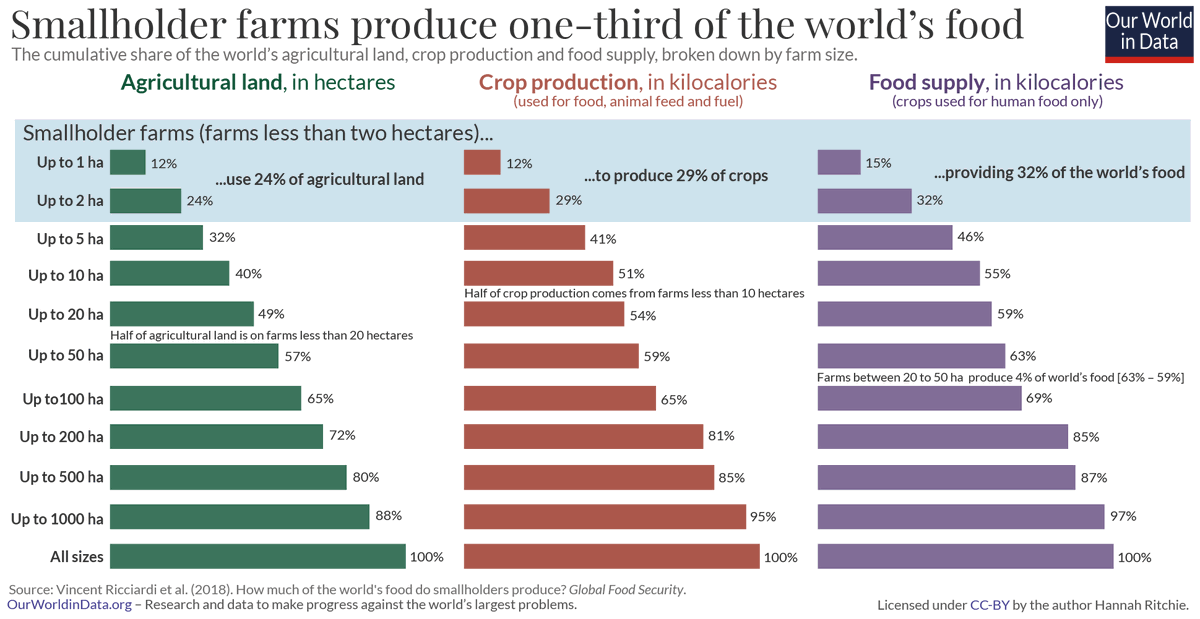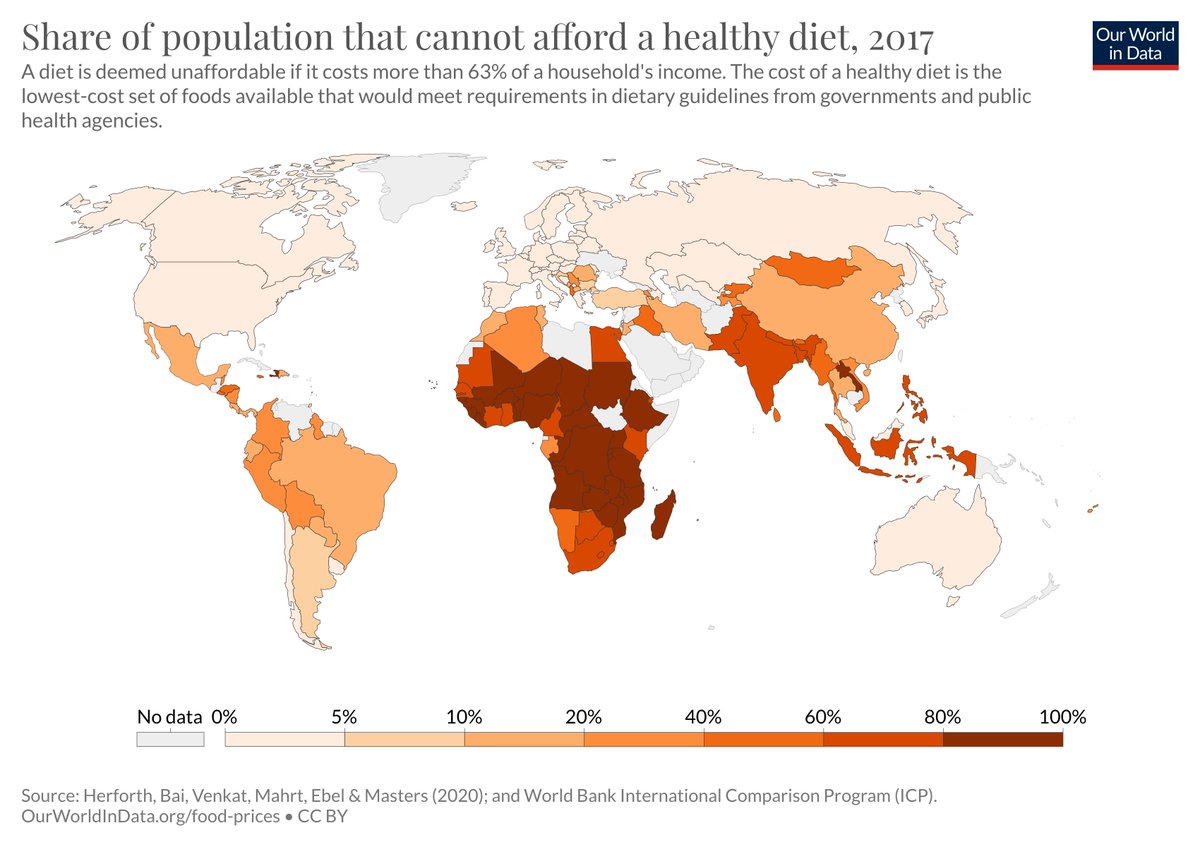
There's a new study out on young peoples' attitudes to climate change.
Survey on 16-25yo across 10 countries. 1,000 people in each country.
Since it's in the media quite a bit, but data not quick to find, I plotted some of the results 🧵👇
Survey on 16-25yo across 10 countries. 1,000 people in each country.
Since it's in the media quite a bit, but data not quick to find, I plotted some of the results 🧵👇
55% of surveyed young people said they would "have less opportunity than their parents" due to climate change
4/
4/

52% of surveyed young people said their "family security would be threatened" due to climate change.
5/
5/

This is the data from this study which is being covered in the media today: papers.ssrn.com/sol3/papers.cf…
For what it's worth, I think we're doing young people a massive disservice by instilling the message that their future is doomed due to climate change.
Not only bad for their mental health, but I also don't think this pessimistic outlook is productive in moving forward.
Not only bad for their mental health, but I also don't think this pessimistic outlook is productive in moving forward.
• • •
Missing some Tweet in this thread? You can try to
force a refresh


















